SRT Creates Four Chrysler-Dodge-Jeep Hot Rods
By John Gilbert
A group of Dodge and Chrysler engineers who mostly loved high-performance cars worked behind the scenes to try to bolster some sporty vehicles with sizzling performance. In 2002, that group gained respectability with the title of SRT, standing for the models modified up to Street and Racing Technology standards — following up in various degrees from the 2003 Dodge Viper sports car.
With Fiat only a year into taking ownership of Chrysler Group, we shouldn’t be surprised that the Italian company is going to keep SRT alive, and is elevating it to a separate brand to develop a stable of high-performance vehicles. After all, Fiat also owns Ferrari and Alfa Romeo, a couple of nameplates that know their way around a race track.
Specific models for the 2012 model year SRT8 modifications are the Dodge Challenger and Charger, Chrysler 300, and Jeep Grand Cherokee. All share SRT’s five requirements: awe-inspiring powertrain; ride and handling capability; benchmark braking; aggressive but functional exterior design; and performance-inspired interiors.
A familiar form leads the pack. The Challenger SRT8 pony car became a star of last winter’s auto show circuit displaying new striping, and “392†designation for the cubic inch equivalent of 6.4 liters.
Joining it in the SRT stable is the redesigned Charger SRT8, while Chrysler gets into the act with the 300 SRT8. Rounding out the group is the return of the surprisingly refined Grand Cherokee SRT8, which was a show-stopper in its first version, and has evolved into the larger, new-for-2011 Grand Cherokee.
Accompanying Fiat’s well-executed redesign of the interiors of all Chrysler Group models, the exteriors were either slightly revised, as in the Challenger and Chrysler 300, or totally redone, as in the Charger. Key to all SRT models, and the basis for meeting the five-point corporate demands, is the newly enlarged 6.4-liter Hemi V8, the common SRT weapon of choice, with power numbers that are close to astronomical and an accompanying improvement in fuel-efficiency and refinement.
I had gotten to know some of the original SRT engineers when the 2.7 V6 was introduced in the then-new Dodge Intrepid. Months later, when the Dodge Stratus and Chrysler Sebring midsize sedans were introduced, one engineer summoned me away from the group for a brief, private test-drive up and down a Seattle freeway in a one-off Dodge Stratus. With a modified 2.7-liter V6, firmed-up suspension, special wheels, and a six-speed stick, it was a blast to drive. Sadly, the expense, to say nothing of the venture’s boldness, prevented it from becoming an anticipated Stratus R/T production project.
But those bold engineers had laid the groundwork for SRT. Almost a full decade, and a corporate bailout and ensuing takeover by Fiat later, I was invited to join the group of automotive journalists in Los Angeles to try out all four of the 2012 vehicles under the new SRT umbrella.
The heart of SRT is the modernized Hemi. I’m more of a fan of small, over-achieving high-tech — but expensive — engines than the concept of enlarging huge pushrod V8s, the way General Motors and Chrysler continue doing with their highest-performance engines. But the new Hemi, enlarged from 6.1 to 6.4 liters, is a stunning performer.
In the Charger, Challenger and 300, the SRT8 engine has 470 horsepower and 470 foot-pounds of torque, while the Grand Cherokee SRT8 has 470 horses and 465 foot-pounds of torque.
“We were getting 420 foot-pounds of torque out of the 6.1 Hemi, and with the 6.4, we’re up to 470, along with the 470 horsepower,†said chief engineer Gary Rogers. “We have completely redone the cylinder heads, with larger ports on both intake and exhaust. The valves are 1.5 millimeters larger, with hollow stems, and the exhaust valves are sodium-filled. The active intake manifold is made of composite to reduce weight, and it has both long runners for low-speed torque, and short runners for high-speed horsepower.
Also improved is the Hemi’s cylinder-deactivation system, which cuts out the operation of four of the eight cylinders whenever the full power of eight cylinders is not demanded. Chrysler used to call it a “multi-displacement†system, and now it has evolved to “fuel saver technology,†although all the aliases fail to convey what the technique does as well as the simple cylinder-deactivation tag. When cruising, the broadened range of the revised system never betrays the fact that only four cylinders are operating, except for a little “Eco†light that appears on the instrument panel. When you hit the gas to accelerate for a pass or merge, the full power comes on forcefully but seamlessly. It hits 0-60 mph in the high-4-second range, and yet should top the EPA estimated 22 miles per gallon in freeway cruising, if you can resist summoning that abundant power.
“We also have variable valve-timing, and oil squirters that shoot up to lubricate and cool the bottom of the pistons,†said Rogers. “With all the changes, we were able to raise the compression ratio from 10.3-1 to 10.9-1.â€
A five-speed automatic handles the power, awaiting expansion of Chrysler’s new eight-speed that will debut on the very strong V6 Dodge and Chrysler models.
Adaptive suspension, with switchable dampers to sport mode, complements the improved chassis and steering to fulfill the ride/handling point, without the anticipated, or previous, driving harshness. Braking is improved by larger Brembo brakes to put all SRT vehicles into the 115-120 foot range for 60-0 stops. The exterior designs are aimed at styling cues that all are functional to enhance aerodynamics as part of the aggressive styling rule. Finally, high-quality materials line the interiors, with everything from new steering wheels and rich wood and leather trim, to performance hardware and the surround-sound audio.
Ralph Gilles, a sharp executive who was the president and CEO of Dodge, has been shifted to the same titles with the new SRT brand, as well as SRT involvement in motorsports. “SRT has learned a lot — about cars, ourselves, and our customers,†said Gilles, recounting the evolution of SRT since 2002.
“This is the second turn for some of the SRT vehicles,†Gilles added. “We’ve made these cars more intelligent. Our active suspension was somewhat jittery, not we’ve found a way to smooth that out. Our Harmon-Kardon audio system is unlike anything we’ve ever put in a car. And each of the SRT cars has its own identity. Every line and scoop is functional, to control aerodynamic lift and airflow. On the Chrysler 300 SRT8, its less ostentatious, while the Charger is the opposite. And the Grand Cherokee SRT8 is a masterpiece; we’ve found a way to balance itself for performance.â€
We drove from our Hollywood hotel a couple hours to the rural California location of Willow Springs, a legendary facility that was the first road-racing circuit in the United States. It has a little bit of everything, with turns both tricky and fast, up and down some hills. It starts with an uphill left leading to a series of tight turns over varying elevation rises from the pit-lane exit at the far end of the main straightaway. A couple more tight turns peak with two right turns circling at the highest point, before plunging down some tight but fast backside turns to a decent straight leading to the final sweeping pair of right turns that return to the main straightaway, with its pit entrance and the start-finish line. We drove each car on a warm-up lap, then three laps as hot as we wanted to go, then a cool-down lap.
My partner and I drove a Chrysler 300SRT8 to the track, and a brief stop for driver changes provided the opportunity to appreciate the dashing good looks of the new Charger SRT8. The basic Charger looks leaner and meaner, with neatly sculpted contours carved into the sides and a more impressive grille and tail. The SRT8 version adds a blacked-out grille that is much more pronounced with its menacing opening, and other modifications, such as a rear spoiler wing, that separate the SRT8 from the herd.
A brief look at all four vehicles begs for more thorough test-driving.
Dodge Challenger SRT8:
Competing against the Mustang and Camaro, the Challenger recaptures the heyday of the 1970 Trans-Am racer in design, so the SRT8 application makes the least alterations to the already-sporty appearance of the Challenger. The increased power of the 6.4 Hemi, however, makes the Challenger SRT8 perform with a smoother and more refined feel. Improved suspension makes the still-heavy coupe feel more tossable in tight turns than its larger SRT8 cousins. A manual switch allows changing to firmer sport handling.
Dodge Charger SRT8:
The visual impact of the newly redesigned Charger is eye-catching wherever you drive. The previous Charger was impressive looking in a bold and overpowering way, while the new one is sleek and sporty in its styling, befitting the improved suspension compliance and the new engine’s power surge. Clicking the U-Connect switch on the media center provides the option of automatic or sport suspension, allowing for very good handling in normal driving, and firming up a notch for sports performance.
Chrysler 300SRT8:
This car was the biggest surprise to me, because the luxurious leather and wood interior convinces you it’s a luxury car, but the performance kick and excellent handling — even on the race track, with electronic sport setting — proves that it’s a high performer as well. Similar to Cadillac’s CTS-V, the 300SRT8 is worthy of
taking on such German performers as the BMW M5. In fact, comparing the very impressive interiors of the BMW M5, Mercedes AMG63, Audi A7 and the Chrysler 300SRT8, with the logos hidden, I think most would choose the 300SRT8.
Jeep Grand Cherokee SRT8:
Because the new Grand Cherokee is wider and heavier, the biggest challenge was to turn that off-road and country club hauler into a sporty vehicle. SRT did it, and what appears to be a top-heavy SUV ready for Moab is transformed into a great-handling road-racer in SRT8 form. A 5-mode switch allows for all different handling needs, and it’s hard to imagine someone speeding off for a weekend of rock-crawling in such a potent package. With 5,100-pound curb weight, 6-rotor calipers handle the braking, and the aero styling changes lift to downforce. A 5,000-pound tow rating means hauling boats, horses, ATVs, motorcycles or snowmobiles in swift style.
In all four SRT8 models, the five-speed automatic can be manually shifted, with steering wheel paddles. In normal driving, the transmission will force an upshift if the driver gets too close to redline, but in sport setting, it holds the gear until shift-or-else time.
The audio system, by Harmon Kardon and with electronics by Panasonic, is a 900-watt powerhouse with 18 speakers in the Challenger and 19 in the other three. It is 19 pounds lighter than the previous system, and it has full surround sound. It’s very good, especially for those who aren’t yet convinced that the sweet music of that big Hemi isn’t sufficient.
Fiat 500 more fun than bowl of jellybeans
By John Gilbert
When you drive into the parking lot at, say, Rudy Luther’s Fiat in Brooklyn Park, you see about an acre of new Fiat 500 subcompacts, lined up in orderly lines so they won’t be mistaken for a gigantic bowlful of jellybeans. All the same shape, and all different colors.
Well, some are the same color, but with 14 colors available, there isn’t a lot of duplication. And an endless list of different graphics and striping packages can individualize any of the three Fiat 500 models. As I gazed down the row of new 500s at Brookdale Fiat, the claim of a half-million possible different color and graphics combinations seemed realistic. If everybody on your block bought a Fiat 500, it would be an amazing coincidence if two of them were identical.
Fiat, of course, would be very happy if everybody on your block bought a 500, which is the modern interpretation of the traditional Fiat Cinquecento. The timing is perfect, with Fiat taking over operation of Chrysler Group, and seizing the opportunity to return to the U.S. market by upgrading all Dodge, Chrysler and Jeep models, and also supplying the small car the Chrysler Group has lacked since abandoning the Neon — during which time small cars have become hugely popular.
I had a chance for a brief road test of various models at the introduction of the 500, and I appreciated a more recent invitation from Doreen Fischer, manager at Brookdale Fiat, located on Brooklyn Boulevard, just north of Interstate 694, and part of the Rudy Luther collection of dealerships. Luther’s also is operating a second Fiat outlet to be positioned in Bloomington, giving Minnesota two of the 130 U.S. dealerships — which Fiat calls “studios.†Fischer said her dealership opened April 1, and sold 21 cars in its first six weeks, long before it could build up the current supply of jellybeans.
The original Fiat Cinquecento hit the streets of Italy in 1957, a tiny little thing with rear-wheel drive that was an Italian answer to Germany’s Volkswagen Beetle. In 2009, after VW had brought back the Beetle and Mini Cooper the new Mini, Fiat decided to reconstruct its iconic small car. Making it more substantial and a bit larger, and with front-wheel drive, Fiat designers wanted to salvage the lines from the original car, notably the hood shape, windshield angle, and its angular slope to the rear.
The personalization of the 500 is an important element, according to Roberto Giolito, Head of Fiat Design, who said: “It is computer aided, but not designed by a computer. It was designed by people.â€
As the new owner of Chrysler Group, Fiat has wanted for years to return to the U.S. market, but never quite got it together. When General Motors and Chrysler needed U.S. government bailout loans to stay solvent a few years ago, the big headlines have been how GM has recovered, and how Ford has thrived without needing government help. Fiat’s takeover of the Chrysler Group — Chrysler, Dodge and Jeep — has been more subtle, but no less important.
Fiat’s redesign of all the interiors and most of the exteriors of all the Chrysler Brand vehicles for 2012 has gained justifiable praise, and Fiat has made an interesting maneuver to solve Chrysler’s lack of a small car with the Fiat 500. Curiously, perhaps, Fiat has insisted that separate that its dealers sell the 500 from separate facilities rather than being parked in a corner of a Dodge or Chrysler dealership. But make no mistake. “We are the small-car brand of Chrysler Group,†said Laura Soave, who is officially identified as the Head of Fiat Brand North America.
From the start, the car was planned to be international, with the United States one of its targets. The U.S. model has several variations from the European car, to meet more stringent safety tests and U.S. driving habits. Alterations include moving the high beams up to the main headlight enclosure, adding a modern automatic transmission, and such amenities as armrests, heated seats, cruise control, and electronic device connectivity, plus acoustic improvements to isolate engine vibration, and a new rear axle for improved ride and comfort.
Chief engineer Fabio DiMuro explained all the changes, and said: “The U.S. car came out so good, we would like to bring these features back to Europe.â€
The 500 comes in three versions for varying lifestyles. The Pop has a 5-speed manual shifter, seven airbags, and a starting price of $15,500. The Sport has a different fascia, firmer suspension settings and seats, 16-inch wheels, a starting price of $17,500, and the availability of a 6-speed automatic transmission with steering wheel paddle shifters, or the 5-sped stick. The Lounge is the top of the line, starting at $19,500, loaded up with all the features that are options on the other models, including the automatic. Some have sunroofs, and a slick-folding convertible is also available.
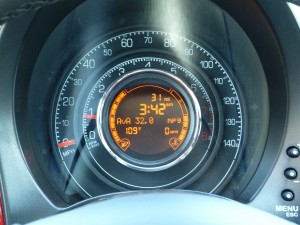
With the tachometer positioned inside the speedometer, also displayed was the July temperature of 109 in Minneapolis.
Fiat is aiming the 500 for an emotional connection with its owners, and if its ultra-cute styling doesn’t grab you, the interior might. A large panel of a smooth, exterior-colored panel cuts an impressive swath from left to right across the dashboard, and the instruments include a cleverly concentric speedometer outlined by the tachometer, with its second readout arrowhead and a digital speed listed in the center. Its surprisingly good performance and handling might surprise someone who hasn’t climbed inside such a well-designed subcompact recently.
The car’s light weight — 2,363 pounds for the stick and 2,434 for the automatic — means the small, 1.4-liter engine’s power pushes the 500 around very well, and amplifies the car’s agility. The actual numbers seem paltry, with only 101 horsepower, peaking at 6,500 RPMs, and 98 foot-pounds of torque, at 4,000 RPMs, but performance is better than the numbers imply and the 500 feels quick around town, and smooth while sustaining 70 or even 75 on a freeway trip. The 500 has enough high-strength steel and design reinforcements to become the first “A†segment car to attain five-star crash test ratings.
The reaction of other drivers on the freeway is interesting, because you can’t tell whether the slower vehicles you just passed have sped up and re-passed because they want a closer look at the Fiat, or whether it’s the usual American tendency to over-react to avoid feeling slighted by a subcompact zipping past so easily.
Some people recall the last Fiats that came into the U.S. There was the 124 roadster and coupe that were fun and fashionable, and the 128 subcompact that had front-wheel drive and performed quite well. For those who don’t think those mid-1960s Fiats were world-beaters, they need only to think back to the ill-handling and poorly coordinated but larger U.S. cars of that era. Since leaving the U.S. scene, Fiat’s expanding reach has taken over ownership of several other brands, including Ferrari and Alfa Romeo. It shares technology and engineering discussions with engineers from all its brands.
A perfect example is the 500‘s “MultiAir†engine, which uses technology that was patented by Fiat after being developed and then discussed with Ferrari’s Formula 1 engineers, and was then fully developed and patented by Fiat engineers. It goes beyond the sophistication of dual-overhead camshaft valve actuation.
MultiAir uses an electro-hydraulic system, with solenoids controlling oil pressure forced from the conventionally operated exhaust valves camshaft, to open and close the intake valves on a fully variable basis, depending on needs initiated by the driver. Instead of being dependent on an intake-valve camshaft, with MultiAir the intake valves can be advanced or delayed in accepting fuel-air mixture, providing a 50-percent increase in low-end torque, while also gaining a 10 percent increase in fuel efficiency and 10 percent reduction in CO2 exhaust emissions, compared to conventional engines.
We attained from 31 to 34 miles per gallon in various driving combinations, while Fiat claims 38 mpg for sustained freeway cruising with the manual transmission.
The future is indeed bright for the Fiat-Chrysler connection, because the MultiAir technique can be applied to any engine. In fact, Fiat has tested the 1.4 engine with the MultiAir system replacing both intake and exhaust valve camshafts, but found that applying the technique to the exhaust side had minimal added improvement, compared to the expense and complexity involved.
“In the 27 years Fiat has been out of the country, an amazing number of people have stories and memories keeping the name alive,†said Soave, during the car’s introductory session. “We are experts at making small cars, and in this era of diversity, we have a global icon with the 500. In America, the old philosophy is bigger is better. But whether it’s telephones or computers, everything keeps getting smaller. So we put all of the features of a large car into a smaller package. It’s not how big your car is, it’s how big your life is.â€
The small car market is expected to expand to 900,000 this year, and the best catch-phrase is that small cars are big these days. Among the dozens of small cars, only a few have a real personality. The Fiat 500 has personality aplenty, along with its Italian flair for style, and its performance and features make it an inexpensive way to drive off into the future.
Pass the jellybeans, please.
2012 Boss 302 pays tribute to 1970 icon
By John Gilbert
There was a little deja vu when the 2012 Ford Mustang Boss 302 first appeared for a one-lap test drive. We were gathered at the spring Midwest Auto Media Association (MAMA) Rally at Road America in Elkhart Lake, Wis., and among the gathered cars for media hot laps was a glistening white Mustang Boss 302. It was particularly glistening because a torrential downpour hammered the area all day. But it didn’t matter. Even driving moderately to keep the high-powered Mustang under strict rein, it was a thrill.
A month later, the very same Mustang — white with its bold black identifying stripes — was delivered to Minneapolis for a week-long test-drive to the North Shore area of Lake Superior, and the weather was fantastic. So was the car.
Ford took its already-strong and still new dual-overhead-camshaft 5.0-liter V8 from the normal Mustang and thoroughly reworked it internally, refining valves, intake and exhaust ports, camshafts, crankshaft, and even the oil pan. Virtually all parts are lighter and stronger for increased capacity against an anticipated increased load. The 5.0 delivers 402 horsepower standard, and 412 in GT form, while the Boss 302 turns out 444 horsepower, with 380 foot-pounds of torque. The added power is easily managed with a 6-speed manual shifter, a short-throw, smooth-shifting gem.
The Boss 302’s price was $42,990, including the heavy-duty MT82 manual transmission, and the Torsen limited-slip differential, plus real Recaro sports bucket seats, in cloth, but it did not come with the widely publicized Sync system that gives almost all new Ford products amazing electronic connectivity. No such voice control, no navigation system, or satellite radio, and I couldn’t coax my iPod to function, either. Apparently it’s assumed that anyone choosing such a strong performer would know where they’re going and wouldn’t appreciate any electronic distractions.
Together with some serious suspension upgrades, including the ability to adjust the shock absorbers for firmer suspension, there are some really special features. My son, Jack, looked underneath the car and noticed two complete sets of dual exhaust pipes.
The secondary pipes cut off near the wheel-wells, and they handle overflowing exhaust, although if the owner wanted to go out to the sort of “track day†opportunities most road-racing tracks now offer, it would be probably be pretty easy to redirect the exhaust for added straight-through power. Such track-day performance also could make best use of the firmer shock settings, and the speed-sensitive electric steering can be set for easy to more resistant wheel feel.
As it stands, the new Boss 302 runs swiftly, handles exceptionally well, stops abruptly, and definitely lives up to its heritage. Good thing, too, because the name Boss 302 demands exceptional performance.
In its never-ending pursuit to keep its pony-car ahead of the herd, Ford has added Mustang models on a nearly annual basis recently, from assorted Shelby and GT models, to specialty models such as the Bullitt, named after the movie of the same name, which included legendary chase scenes in which Steve McQueen raced through the streets of San Francisco. Ford has been able to continue the specific, if subtle, special editions to keep the Mustang current, not missing a beat since its 1964 origin.
But the Boss 302 signals the heritage of truly high-performance Trans-Am racing Mustangs. Built only in 1969 and 1970, the Boss 302s became a company icon, right up there with the LeMans-winning GT-40, and was the closest to a race car Ford ever made in a mainstream vehicle.
Ford’s impressive job building the latest Mustang, with its new DOHC V6, and its all-new 5.0 DOHC V8, made it pretty certain the Boss would connect the dots. There is a lot of the old exhilaration every time you punch the throttle, shift the gears, or zip around a tight curve without wavering from the flat and stable attitude. I’m ready for the red key.
In the late 1960s, pony-cars were a breakthrough for American cars. The “bigger is better†mentality had filled our driveways with large cars that were, pretty much, tanks. Midsize cars were better, but the world of performance cars changed completely with the first Mustang in 1964. It was an immediate classic — lightweight, with a long hood, short rear deck, 2-plus-2 seating, and either a mild but economical 6 or a hot but small V8. Chevrolet followed with the Camaro, Chrysler with the Dodge Challenger and Plymouth Barracuda, Pontiac had the Firebird, and even American Motors got into the act, with the Javeliln. All were similar in size, shape and purpose. And all of them went Trans-Am racing. They were pony-cars, light and agile ponies alongside the midsize horses or full-size plow-horses.
Covering auto racing in those days included the Sports Car Club of America’s Trans-Am series, one of the most exciting, closely contested road-racing series ever concocted, much closer to true street machinery than something like NASCAR is today. Everybody was in it. Roger Penske, and his engineer-driver Mark Donohue, led the Camaro attack, while the Dodge Challenger had Sam Posey behind the wheel, and Plymouth’s Barracuda had Swede Savage driving for Dan Gurney. Bud Moore ran the Mustang team, with the legendary Parnelli Jones and George Follmer as drivers.
All the Mustang needed was a new and more potent engine beyond the outgunned 260 and 289 V8s, and Ford engineers created a masterpiece — a 5-liter, 302 cubic inch V8, with forged steel crankshaft, four-bolt main bearings, solid valve lifters, a deep-set oilpan, special short-skirted pistons and special valves. It was about as good as a pushrod engine could be, advertising 290 “wink-wink†horsepower. It was a 3,000-pound car, and anything with more than one horsepower to 100 pounds called for an insurance hit. So Ford understated its power, despite dyno tests showing the engine closer to 320 or 330 horsepower.
The 1969 Boss 302 was very good, with its quad headlights, narrow grille and three-sided rectangular side stripes, but the 1970 was an excellent update, with a bolder stance, larger single headlights, and the more distinctive side stripe. Parnelli Jones challenged Donohue’s Camaro in 1969, then won the 1970 championship with a remarkable display of driving skill, and an exceptional car.
The 2012 Boss 302 flashed me back to early summer of 1970. I had tested all the pony cars, and we made a family decision to buy one. I liked the Camaro, and the Challenger, and I really liked the looks of the Barracuda, but in objective analysis, the Mustang Boss 302 stood apart, as tight as the Camaro, with the most sophisticated and impressively refined balance of power and agility. It cost a staggering — at the time — $5,000. I hustled down to the Saint Paul Ford plant to help unload the brand new 1970 Ford Boss 302 Mustang from the rail car that brought it from Detroit. The urgency was partly because it was the first and only car I ever ordered factory-direct.
A bigger reason was that my wife, Joan, son Jack, and I, were departing the next day on an epic vacation trip. With a lightweight fold-down tent trailer, our plan was to hook it up to the Boss and drive directly to Toronto, where I would write about the season’s first Can-Am race at Mosport Park. Next, we would drive and camp over the following week, reaching Long Island in time for a Trans-Am race at Bridgehampton. Then, with another week to go, we would drive north into Quebec, camping in the Laurentian Mountains until the weekend, when I would cover the next Can-Am race, at St. Jovite.
It was an awesome trip, with indelible memories for all of us. The Boss 302 was medium blue, with that black stripe angling down behind the front wheel-wells and then shooting straight back, shaped like an enlarged hockey stick. The black stripe was a 3M glass-bead marvel, because when light hit it, it reflected white, bright as a highway sign.
The next year, 1971, Ford redid the Mustang, making it a foot longer, and offered a “Boss 351†with similar revisions to its Cleveland 351 cubic inch engine. It had more power, on paper, and George Montgomery, who built Donnybrooke Speedway in Brainerd as his own high-speed dream, bought a black one, partly because he liked my Boss 302 so much. At a race that year, Montgomery had his public address announcer say that he and I would run a match race during the noon lunch-break. My car needed a tune-up, and I was worried about being outgunned, but not only did my Boss 302 beat his new Boss 351, but I was still in third gear at the end of the quarter-mile.
We owned the car through a couple of accident-induced revisions, and finally sold it 30 years later. Technology had overtaken the original Boss 302’s whistling, high-revving pushrod engine design. The new 5.0-liter Ford engine with dual overhead camshafts, variable valve-timing, and all the other latest technology parts, sets a new standard. And revising it to form the new Boss 302 is a superb example of an All-American pony car, with future-retro styling that honors its 1970 model heritage.
The new car’s exterior design graphics are my only complaint. The base Mustang V6 has large single headlights, while the GT has four headlights, and while they are large, they are positioned one outside and one inside the grille on either side — making the GT look a lot like the 1969 Mustang, and its 1969 Boss 302 spinoff. In 1970, the Boss 302‘s improvements were set off by an exterior featuring larger single headlights, a bold grille, a blacked-out rear end, and the hockey-stick-on-its-side-shape side graphics.
The 2012 Boss 302 has been refined to differentiate from the GT by its large single headlights and grille, and blacked-out rear panel, which makes it look about as different as the 1970 did from the 1969. The side graphics come in various color combinations, all of them striking, and are virtually identical to the horseshoe-on-its-side 1969 Boss, even though the new car is a stunning replica of the 1970 Boss 302. So But the new Boss 302 mimics the 1970’s appearance, with graphics identical to the 1969. Ford needs to bring back one design consultant to oversee such things, old enough to appreciate the heritage of such a true company icon.
The new car will blaze its own contemporary trail. It even comes with two ignition keys, one silver the other red. The silver one makes the car work perfectly; the red one is for those track days or other high-performance desires, because merely inserting it and turning on the Boss 302 also adjusts all the electronic settings for all systems to be on high-performance. The test car I got had only the silver key. Oh, darn. Guess I’ll have to try to get it for another week.
Hyundai speaks fluently with new Accent
By John Gilbert
LAS VEGAS, Nev. — The latest new Hyundai appears certain to be a major sales success — with apologies to all if that sounds redundant.
The hits just keep on coming for Hyundai, and the 2012 subcompact Accent is just the latest offering to use up whatever superlatives remain. It is stylishly designed both as a sleeker sedan or the cargo-happier 5-door hatchback; it is lighter but stronger and therefore safer; it is peppy and fun to drive but extremely frugal, at over 40 miles per gallon; it goes better than most subcompacts because it’s the only one offering 6-speed transmissions in either stick or automatic; it stops far shorter than any other subcompact because it’s the only one with 4-wheel disc brakes; and it has enough interior room to qualify as a compact rather than subcompact by EPA rules.
And, oh yes, it can be bought for a base price of $12,445.
Although the base GLS sedan is surprisingly well equipped, you can jack up the price with all sorts of options and features you may not expect in a subcompact, all the way up to a loaded SE 5-door at $16,795. The sticker price, economy, content, and fun quotient — especially the 40 mpg and the sticker price — may make the Accent most deserving of accolades, even in Hyundai’s stable of over-achieving prize-winners.
It doesn’t matter what Hyundai does to expand its impressive portfolio of high-tech yet budget-friendly automobiles, every time there’s a model changeover, the South Korean company simply strikes again to raise the bar. If an analogy helps, think about watching 23-year-old Irishman Rory McIlroy play golf in the 2011U.S. Open: Every hole he played, he hit a near-perfect shot with great length, down the middle, then hit it up next to the hole, then sank the put for a birdie, or a par, but almost devoid of anything approaching a bogey. The next day, he did it again, shooting all four rounds with under-par scores in the 60s to completely outdistance the rest of the field of the best golfers in the world. McIlroy came out of nowhere to look like he might be the best golfer in the world, Tiger Whatsisname notwithstanding. In the automotive world, Hyundai is doing the same thing.
Two years ago, Hyundai introduced its Genesis luxury sedan, which captured the 2010 North American Car of the Year award, adding fame when its new 4.6-liter V8 was named to the select annual list of Ward’s top 10 engines of the world. Impressive, but as the Genesis smoothly crooned out classics, it was promptly upstaged when Hyundai turned the Sonata into an automotive rock star. The 2011 Sonata midsize sedan has it all, with solid build-quality from its new Montgomery, Ala., plant to go with flashy California design contours, a direct-injection upgrade to its 2.4-liter 4-cylinder engine, for the best power and fuel efficiency in its class, and a superb new Hyundai-built 6-speed automatic transmission — all for a bargain price. The American buying public took immediate notice, and In May of 2011, Sonata was the No. 1 car sold in the U.S., trailing only the perennial leading Ford F150 and Chevrolet Silverado pickup trucks.
When the Tucson compact SUV was renovated, nobody was surprised that it, too, was a major success from both design and performance standpoints, and it will become even better when the GDI version of its 2.4 is installed for the 2012 model year. Next came the new Elantra compact, which is sort of a downsized Sonata in styling, and hits a legitimate, real-world 40 miles per gallon from its new 1.8-liter “Nu” engine, while rising above the fierce competition by offering both a 6-speed manual and the slick 6-speed automatic. Hyundai officials point out that competitive makes that advertise 40 mpg charge extra for special effects to attain it, requiring the use of asterisks to disclose that all models don’t reach 40, while the Elantra achieves 40 with all models, stick or automatic. Hyundai also measured its competition and divulged statistics showing that all the other 40-mpg competitors combined sold 15,000 for January through May of 2011, a span when Hyundai sold 80,000 Elantras.
What could Hyundai have left to prove? If you must ask, make sure to speak with a distinct Accent.
The Accent has been a nice little bargain econocar, since before Hyundai’s meteoric surge upward in the last two years. As if to celebrate all the impressive and expensive tricks used in the other categories, Hyundai combined all of them to make sure the new Accent would jump to the head of its class. Such cars as the Toyota Yaris, Honda Fit, Ford Fiesta, Nissan Versa, Mazda2, and Chevrolet Sonic reside there, an affordable group with good mileage, which makes it logical that consumers are boosting subcompact segment projections upward by 33 percent this year. With fuel economy flirting with $4 per gallon, the majority of consumers now claim that fuel economy is No. 1 among criteria for selecting a subcompact.
Hyundai is perfectly positioning the Accent for that reality. After proving the value of direct injection with the Sonata, they were satisfied that the Elantra could reach 40 mpg without the costly direct-injection method of sending a totally-combustible mist into each cylinder. So the Elantra doesn’t use GDI (gas direct injection), but Hyundai took no chances with the Accent. It switched from a cast iron to an all-aluminum 1.6-liter Gamma engine, with gas direct injection, saving 40 pounds and increasing power by 25 percent. Building the new car with high-grade steel was another breakthrough. There are various grades of steel, and since Hyundai is the only auto company that owns its own steel plant, it has ready access. With high-grade steel, a manufacturer can make body panels and structural pillars thinner and yet stronger — and safer – compared to the same size car built of thicker but lower grade steel. The Accent uses 38 percent high-tensile steel, which is impressive; it also uses an additional 21 percent ultra-high grade steel. Those two high-grade levels total of 59 percent of the car, allowing the Accent’s body stiffness to improve by 22 percent over its predecessor, improving its safety characteristics significantly.
The Accent weighs 2,396 pounds as a 4-door sedan, and 2,430 in 5-door hatchback form, so the lighter 1.6 GDI Gamma engine’s 138 horsepower at 6,300 RPMs, and 123 foot-pounds of torque at 4,850 RPMs, are easily sufficient. Those 138/123 horsepower/torque figures compare with the Fiesta’s 120/112; the Mazda2’s 120/98; the 108/105 of the Chevy Aveo; 106/103 of the Yaris; 117/106 with the Fit; and 109/107 with the Versa.
Of all those competitors, only the Fiesta offers a 6-speed automatic, and none offers a manual with anything other than a 5-speed, making the Accent stand alone with the choice of a 6-speeds in either the stick or the impressive Hyundai-built automatic, with Shiftronic manual-shift mode. Figuring pounds per horsepower, the Fit is the best of the competitors, with 21.3 pounds per horsepower, while the Accent has a decisive edge with17.6 pounds per horsepower in the 5-door and 17.4 with the slightly lighter 4-door sedan.
The new Accent has an “Active Eco” switch that modifies engine and transmission control for up to 7 percent fuel economy improvement. The concerted focus — you should pardon the expression — attains a 40 mpg highway mileage rating that is an 18-percent improvement over the outgoing model’s very good 34 mpg. To reach it, the Accent combines the lighter engine for a 6.1 percent mileage improvement, electric steering for a 4.1 percent increase, an improved altenator management system for 2.7 percent, low rolling resistance silica tires for 2.1 percent, dropping the aerodynamic coefficient of drag from 0.31 to 0.30 for 2.1 percent, and using a 6-speed manual compared to the outgoing 5-speed for 1.0 percent. That adds up precisely to 18.1 percent.
In our preliminary test drive, we got well over the EPA’s 40 mpg, too. I was curious about Hyundai choosing to not put direct injection on the Elantra engine, but making sure to use it on the smaller Accent. Mike O’Brien, the chief engineer on the car, explained how the new aluminum engine has dual variable valve-timing, with a maintenance-free timing chain, and an offset crankshaft to nullify vibration, and electronic throttle control — all worthy upgrades for any engine. “But direct injection is the single biggest improvement possible to affect the fuel economy of a gasoline engine,” he said. “It all comes down to the detonation of fuel, and with direct injection we’re able to raise the compression ratio while keeping the fuel cool, improving the volumetric efficiency.
“The biggest challenge for us is that direct injection is comparatively costly, and we have to weight the obvious advantages against the cost. We decided to do it because we expect we could manage the cost, with component costs coming down.”
When we got the chance to drive the Accents out of Las Vegas and down to Hoover Dam, then back up through the surrounding hills to Loew’s resort, I picked out an SE model with a stick, to get the taste of the sportiest version. My codriver noticed how free of wind-noise the Accent was, and how comfortable the clutch engagement was. I drove later, and agreed completely, and I had the chance to drive much more aggressively on some curvier roads to higher elevation.
After such aggressive driving, I was impressed that the computer showed I had attained 39.5 miles per gallon, until my codriver informed me she had gotten 47.5 mpg. The Accent SE’s EPA estimates are for 30 city and 40 highway, so my 39.5 was right on it, impressive for how hard I drove, but her 47.5 proved that with only a bit mellower driving, the Accent would follow the normal Hyundai habit of exceeding its EPA figures with real-world facts. We can attribute the over-achieving to Hyundai’s GDI.
The roominess inside the Accent is created by optimum use of the slight enlargement, which is 3.5 inches longer with a 2.8 inch lengthening of the wheelbase. The 5-door hatchback cargo capacity measures 21.2 cubic feet, which ismore than larger-class vehicles such as the Infiniti EX35, Audi A3, Mazda3 5-door, or Subaru Impreza 5-door.
Styling of the Accent takes on the current Hyundai signature look of “fluidic sculpture,” featuring flowing lines that seem to be in motion even while parked. I like the sleekness of the sedan, but the hatchback has a sporty flair, especially with the little rear spoiler atop the hatch on the sportiest SE model. The interior layout is roomy, with a neatly arranged instrument panel and center console that house all the switchwork and gauges in placement that works for both ergonomic and aesthetic success. The seats are well-bolstered and comfortable, and the interior comes in a choice of beige, grey, or black. The lining of the interior strikes a new balance between the soft spongy stuff that beats the old hard and harsh plastic, by combining plastic, fibrous tissue, and volcanic rock. I never got the chance to ask a Hyundai executive about where, why and how volcanic rock worked its way into the equation.
The GLS, GS, and SE all are different, but Hyundai wisely limits the Accent to eight different orderable configurations. Others offer many more combinations, but Hyundai explained that having too many means customers have difficulty finding exactly what they want at dealerships. We later drove other models, to make sure the strong 6-speed automatic performed well, too. It didn’t seem much of a letdown, even though the SE has a sport-tuned suspension. Features, such as hill-start assist and electronic stability control, are obvious assets, as are the 4-wheel disc brakes, which stop the Accent with proper urgency.
Hyundai projects that the 5-door hatches and the 4-door sedans should split sales about 50-50, while stick-shift versions should account for 20 percent of Accent sales.
The SE we first drove had the model’s extended list of standard features, with electronic stability control, traction control, antilock brakes with electronic distribution and assist, air-filtration on the air conditioning, steering wheel remote controls, Bluetooth phone connectivity, power windows, mirrors and locks, keyless entry, trip computer, foglights, rear wiper, and seatbelt pretensioners as well as tire pressure monitoring, AM-FM-MP3-iPod audio with six speakers and satellite radio, and 16-inch alloy wheels. The base price for all that was $15,795, and it went up to $15,925 only after adding carpeted floormats and a cable for iPod use.
U.S.-only Passat challenges midsize icons
By John Gilbert
It might seem logical for comparison shoppers evaluating the highly-competitive midsize segment to find themselves drawn to the Volkswagen Passat.
But that’s not fair, you say, because the Passat, with its German engineering, is more substantial and more expensive than others in the midsize segment. Aha, but that’s a perception that is both true and false, when it comes to the newly redesigned 2012 Passat.
The 2012 Passat looks entirely different as it jumps with all four wheels into the thick of the midsize cluster in size and price, while retaining its proven engines, highest-tech direct-sequential transmissions, lengthy list of standard equipment, and the solid feel of German engineering — with a couple other significant new twists.The new Passat is designed specifically for United States consumers, and will be built in an all-new plant in Chattanooga, Tenn.
Volkswagen’s adjusted product strategy means its slightly enlarged Passat is designed for U.S. buyers, and built in the U.S. at the all-new VW factory in Chattanooga. Compressing the price structure allows the Passat to take dead-aim at the midsize stalwarts from Asia, such as Toyota Camry, Honda Accord, Nissan Altima, and the onrushing Korean pair of Hyundai Sonata and Kia Optima, plus the rejuvenated domestic products such as Chevrolet Malibu and Ford Fusion. All of those are impressive for various reasons, although some of them may have gone to seed out of corporate complacency, which leaves plenty of opening for the new Passat.
Restyling of the Passat couldn’t have come at a better time. The once-distinctive sedan had become pretty anonymous and almost invisible over the years, both figuratively and literally, although it was still a good and solid sedan. Looking back over the last decade, VW sold 80,000 Passats here in 2001, but that number fell off and has dwindled to about 12,000 now, making it an outsider in a segment that has expanded and grown at a record rate. Maybe Volkswagen grew comfortable depending on the smaller Golf and Jetta to carry the load, and didn’t mind if buyers perceived the Passat as being upscale, rising above the fray. But the real action is within the fray, and that’s where VW intends the new Passat to be.
As the midsize segment heads toward an anticipated 2.9 million, VW’s strategy to challenge the best competitors with a thoroughly refreshed weapon. Before conquering the world, Volkswagen will gladly settle for returning to its previous popularity in the U.S., with the new Passat leading its market-share charge. The gamble is that a nameplate that has fallen to 12,000 annual sales will now come from a new facility that can build as many as 150,000 Passats per year.
Kevin Joostema, VW’s manager of product marketing strategy, put it pretty directly when he said: “If we can’t make a midsize sedan right, it would raise very serious questions about Volkswagen.”
A good friend of mine in the auto media said he thought it was foolish for Volkswagen to come out, a year ago, and declare that it has a clearcut objective of becoming the largest automaker in the world. We debated that, because Volkswagen is close to the top right now, and my thought is that the company seems to have lost touch with some consumers in the U.S. who are streaming out of their large sedans and SUVs and being successfully hustled by competitors. So with a new U.S. facility in which to build a new car to carry the new strategy, Volkswagen can be excused for jumping up on a pedestal to let people know its bold intentions.
The Passat follows the Jetta by a year and the Golf by two years as new product introductions for VW, and all three have gone to a sleeker, more horizontal grille as a new corporate look for the German company. The Jetta was greatly altered for an attempt to compete directly in the compact class, against the Civic, Corolla, Sentra, Focus, Cruze, and the new Hyundai Elantra. VW eliminated some content and slimmed down the Jetta considerably, which led it to being roundly criticized by most in the automotive media for plain interiors, less-satisfying content, and unremarkable styling.
But the Jetta also has a significantly lower price. Starting at around $16,000 surprises most people who perceive the Jetta to be more solid and substantial than the rest of the compacts, and sales have been good so far. Being more affordable, with a strong array of dependable VW engines — including the supurb turbo-diesel TDI — has meant consumers like the Jetta far more than media cynics. The Passat shares some of the horizontal-line design cues of the Jetta, but with more creative styling, especially on the hood and front end. That’s understandable, for more reasons than the family resemblance. Jose Carlos Pavone, who had some hand in the Jetta design, was the main artist for the Passat. The Volkswagen press information credits Walter de Silva, VW’s Italian design chief, and Klaus Bischoff, the German design leader, for the new look. Those executives do sign off on the design, so they are responsible, but it was drawn by Pavone, who is a native of Brazil. After a few years in VW’s home city of Wolfsburg, Germany, Pavone says he has found paradise after living in Santa Monica, Calif., for a month to work at the new corporate design studio.
“I was 27 when I first designed this car, five years ago,” said Pavone. “It’s bigger, more masculine, with the front bumper extended longer and the A pillar moved back. The contour lines on the bonnet continue down to outline the foglights, and the shoulder line on the side connects the headlights and taillights. Inside, the cabin communitates a lot of openness, carrying over from the exterior.”
My co-driver told a Volkswagen official that she was unimpressed with the Jetta, but really likes the Passat. Frankly, I like the Jetta, although its styling is of the modern-soap-carving idiom, with symmetric horizontal lines and contours that are more simple than exciting. And the added curves sweeping down off the hood, and the continuity of lines on the sides that meet at the rear, where more horizontal lines are at play, give the Passat more personality than the Jetta.
The previous Passat will continue to be built in Germany, while the new Passat is greatly simplified. Its predecessor has 15 build versions that could come out in 128 combinations. VW studied the trends and realized 80 percent of all Passats were from only 10 of those 128, so the new Passat is reduced from 128 to 15 combinations. The car is slightly enlarged, with a length of 191.6 inches and wheelbase of 110.4, the 3,300-pound Passat is more than spacious for five adults, with a lot of luggage.
The car’s solid feel is enhanced by three familiar engines, with the base 2.5-liter 5-cylinder improved to 170 horsepower at 5,700 RPMs with 177 foot-pounds of torque peaking at 4,250 RPMs, and the top-of-the-line 3.6-liter V6 with a healthy 280 horsepower at 6,200 revs with 258 foot-pounds of torque available from 2,500-5,000 RPMs. My favorite is the 2.0-liter TDI, a turbocharged diesel 4-cylinder with only 140 horsepower but with 236 foot-pounds of torque. Imagine having almost as much low-end power torque as the V6 that is almost twice as large.
Volkswagen’s slick DSG (dual sequential gearbox) is a clutchless gem with computerized switching between two internal clutches, which engage the next gear ahead of time. Gearshifts are immediate and precise, whether left to up- and downshift by itself or at the touch of steering-wheel mounted paddles. The DSG, first put into use by Audi on various models, has been used by such VWs as the GTI and Golf TDI models, and is the transmission of choice with either the V6 or the turbo-diesel Passat.
The V6 is truly powerful, and will be the choice of some willing to pay the premium price for it. The 5-cylinder, which had never been my favorite engine, has been refined and delivered steady power during our test-drive time, and it got 32 miles per gallon while being driven hard on the second half of the route from Chattanooga to Nashville.
My favorite was, clearly, the Passat with the TDI and DSG. The transmission perfectly coordinated the quiet-running turbo-diesel’s boundless torque, making the car thoroughly enjoyable to drive with a touch of sporty-car flair, while showing off the capability of topping its EPA highway estimate of 43 miles per gallon.
The prices might be the most pleasant surprise. The basic S model has the 2.5, and starts at $19,995, with a long list of standard equipment. The upscale SE starts at $23,725, and the top-line SEL at $28,395 with the 2.5. The 3.6 V6 availability starts in the SE, base-priced at $28,995, or $32,950 in the SEL. The TDI is available in the SE at a base of $25,995, or in the SEL, loaded, at $32,195.
Standard equipment on the Passat is impressive, even on the base car. The S has such features as power locks and windows, automatic dual-zone climate control, Bluetooth connectivity, audio controls on the steering wheel, 8-way manual driver’s seat, and VW’s three-year, 36,000-mile free maintenance. Moving up to the SE provides 17-inch alloy wheels instead of 16s, an 8-way power driver’s seat, heated front seats, touchscreen premium radio, and multi-function leather-wrapped steering wheel. The TDI versions have a standard 6-speed manual transmission with the DSG as an option, while V6 models add comfort sport seats, 18-inch alloy wheels, a sunroof, and a unique Fender Premium audio system, coordinated through the legendary guitar-amp company and Panasonic.
Premium level models justify their heightened sticker prices by putting together combinations of all those features, and adding leather interiors with brushed aluminum and wood trim inside, foglights, and navigation systems.
At the introduction of the Passat, the gathered auto media also got a tour of the new plant in Chattanooga, a huge and ecologically friendly facility that once was an Army ammunition plant. Volkswagen examined 398 potential sites before settling on Chattanooga, for its quality of life, weather, and shipping and transportation ease. Volkswagen got 85,000 applications for positions working at the plant, and 95 percent of the 1,800 hired so far are from the Chattanooga area.
The car’s total construction can be done at the modern six-building campus, including special parts stamped and built by chief suppliers, who have areas on-campus. Workers rotate to different roles four times each day, and the highly robotized assembly includes 10 different spot-check stations that measure fit and finish to within 1.5 millimeters of precision. After assembly is completed, the line enters a painting process that has a unique powdered limestone technique for capturing any paint overspray. There also is a full training facility for employees.
Driving the Passat models confirms the comfort and solid feeling on normal city or highway trips, and driving them hard, on narrow but winding and hilly roadways, proves they handle with flat stability and sports-sedan agility from their tight, 36-foot turning circle and accurate feel and feedback of the electro-mechanical rack-and-pinion steering. The suspension, with struts and coil springs in front and four-link independent rear, and stabilizer bars at both ends, keeps the Passat securely in place even during the tightest curves.
The midsize segment has been solidly in the possession of the Camry, Accord, Altima, Fusion and Malibu in recent years. The high-quality and low-priced Sonata and Optima add the new dimension of high-styling and inexpensive stickers. And now the Passat drives and feels more luxurious and expensive, but is priced right in the midst of them all. Volkswagen may intend to conquer the world, but for the immediate future, the company undoubtedly would settle for the new Passat claiming a larger share of the midsize market.


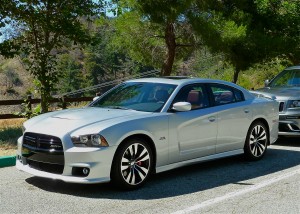
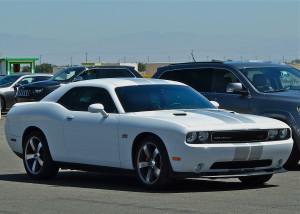
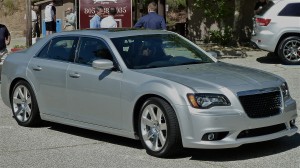
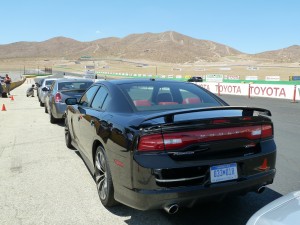
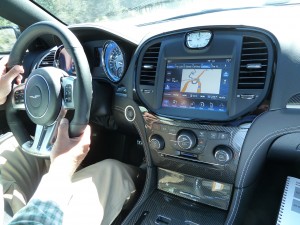
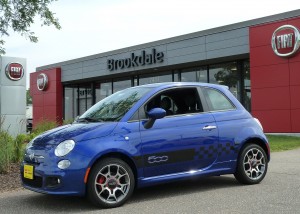
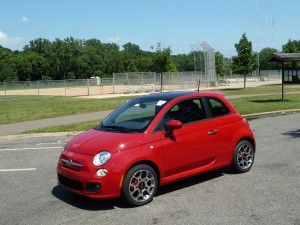
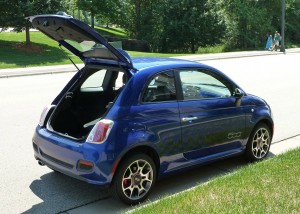
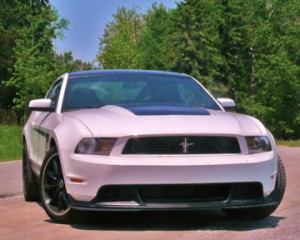
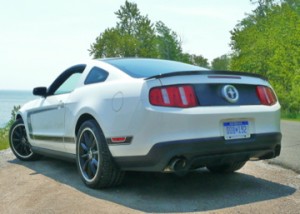
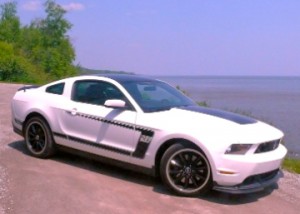
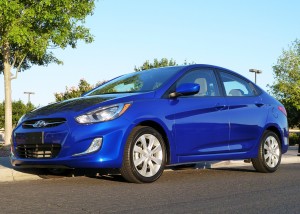
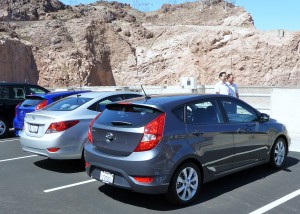
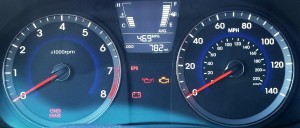
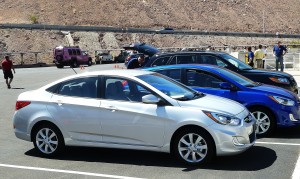
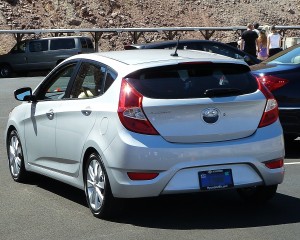
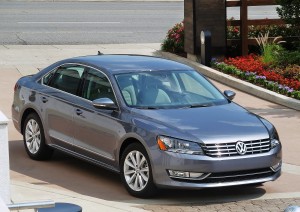
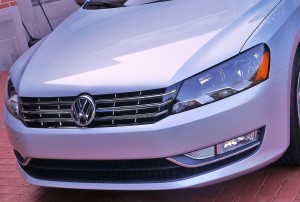
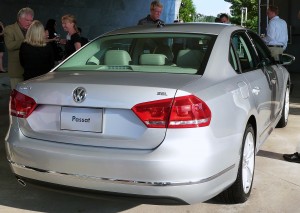
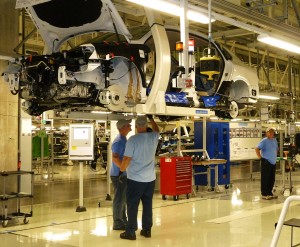
 John Gilbert is a lifetime Minnesotan and career journalist, specializing in cars and sports during and since spending 30 years at the Minneapolis Tribune, now the Star Tribune. More recently, he has continued translating the high-tech world of autos and sharing his passionate insights as a freelance writer/photographer/broadcaster. A member of the prestigious North American Car and Truck of the Year jury since 1993. John can be heard Monday-Friday from 9-11am on 610 KDAL(www.kdal610.com) on the "John Gilbert Show," and writes a column in the Duluth Reader.
John Gilbert is a lifetime Minnesotan and career journalist, specializing in cars and sports during and since spending 30 years at the Minneapolis Tribune, now the Star Tribune. More recently, he has continued translating the high-tech world of autos and sharing his passionate insights as a freelance writer/photographer/broadcaster. A member of the prestigious North American Car and Truck of the Year jury since 1993. John can be heard Monday-Friday from 9-11am on 610 KDAL(www.kdal610.com) on the "John Gilbert Show," and writes a column in the Duluth Reader.